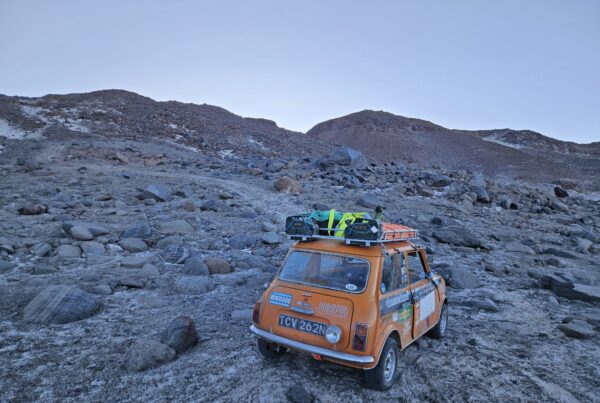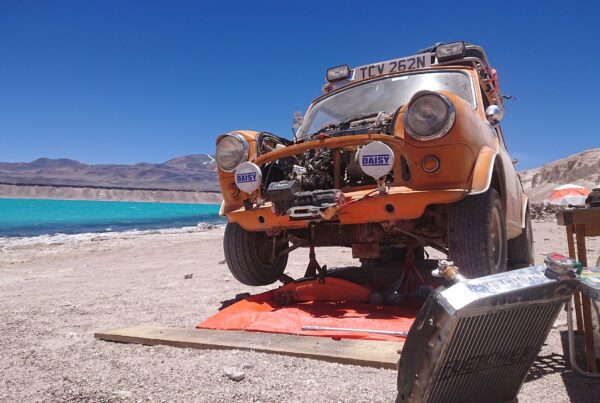In late January, it ended. After 4,000 miles completed across Uruguay, Argentina and Chile, with a drive up the world’s highest volcano thrown in for good measure, the ClassicLine Insurance-sponsored Mini6000 Expedition rolled into the port of Montevideo, Uruguay. There, our classic Mini was loaded into a container and commenced its five-week journey back to the UK. The ship onto which it was loaded went by the name of the MV Cap San Sounio, and made several port visits as it made its way up the coast of Brazil, before striking out across the Atlantic to the Tangier, in Morocco. Here, Daisy’s container was transferred to the MV Shijing, which took it, via a brief stop off in Hamburg, to the Port of Felixstowe, in East Anglia. In the second week of March, the car received its customs clearance, the container was opened, and I set off on the 600-mile round trip to bring it home.
The first stages of this journey passed in a blur of darkness and fatigue. A midnight bus from Plymouth took me to London, where a mixture of underground trains and overground walking took me to another train to Ipswich, where I boarded yet another train to Felixstowe, and walked the hour or so to the shipping compound from where I was to collect Daisy.
She sat there looking forlorn, parked outside a warehouse amid the pallets and containers. The dock workers told me they hadn’t been able to start her, as the battery had gone flat while the car was at sea, so a jump start was needed. Strangely, connecting the jump leads immediately resulted in the starter motor firing up, and so I retrieved my rubber mallet to unstuck the solenoid. And then we got the little motor running, barking through its chunky exhaust for the first time in six weeks. Next, it was time to get the alternator working again, as oil had found its way onto the belt, causing it to slip. Luckily, a quick spray of degreaser had it spinning properly again.
But Daisy wasn’t ready to go home just yet. Both oil and coolant needed topping up, as both vital fluids were leaking from some unknown location in the engine bay. And then there were the brakes. The volcanic grit in which Daisy had lived for 24 days as she climbed the volcano had worked its way into the rubber seals within the hubs, causing them to leak. The whole system needed to be fixed, cleaned up and then bled, and it was four hours before Daisy was ready to begin the journey back to Devon.
It was a long drive through the night. Frequently, I had to stop to top up the oil as the leak continued and, on several occasions, I stopped for over an hour to allow the coolant system to depressurise, so I could top it up. Having barely slept for over 30 hours, the monotony of 50mph on the motorways seemed to go on forever, a strange anticlimactical homecoming after the highs of the southern hemisphere.
It was the middle of the night when Daisy finally reached my workshop, and I breathed a sigh of relief when she did so. She’d been through so much in the previous months, and was very much overdue some TLC. But now she was at the workshop, she’d be getting all the care she needed.
It’s now a few days since Daisy got home, and she’s well on her way to recovery. The oil and coolant problems turned out to be head gasket-related, and will be fixed very soon. And new brake cylinders are now on order, to fix the fluid leaks and bring back some peace of mind.
Daisy may only just have got back from her first big adventure, but very soon, she’ll be ready for the next one, whatever that may be.
Watch this space.









